Mediterranean Islands
In the summer months, many of us head for a Mediterranean island. But which to choose? Jane Labous asked six travel writers for their favourites…
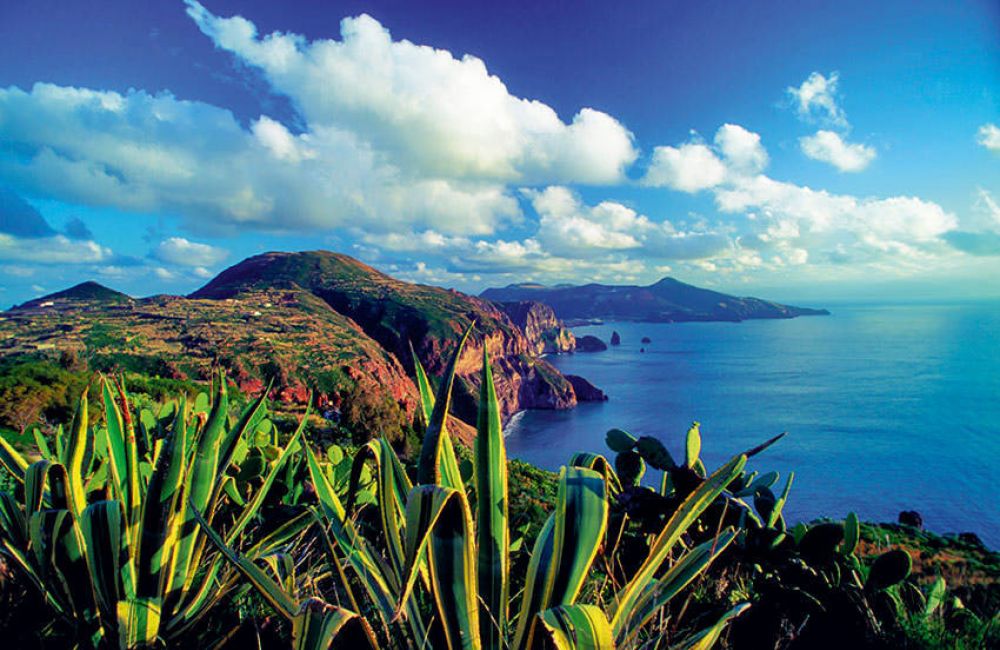
In the summer months, many of us head for a Mediterranean island. But which to choose? Jane Labous asked six travel writers for their favourites…
'The Cyclades is an extensive, fascinating archipelago of 39 islands spread across the Aegean. There are so many different islands you can visit – Santorini is one of the best known – but by far my favourite to use as a base is Andros, a little-known but relatively large island near Mykonos. A friend has a house there and I like it so much that I’ve been to visit twice.
For a Greek island, Andros is unusually lush and hilly. There are streams that run year round, making it wonderfully green, even in the summer. I stay at my friend’s house in the countryside and we soon slip into the Greek way of having a huge, late lunch at a taverna after spending the morning walking, and then lazing around on a beach.
We always start with an enormous Greek salad shared between the six of us, then go on to order whatever is the speciality of that particular taverna. The best taverna we go to is in Batsi, the nearby town, and it’s just called Louis. The owner, who is unsurprisingly called Louis, makes the best souvlaki on the island.
I love the gorgeous creamy tzatziki you get in Andros, made with the thickest Greek yogurt and home-grown cucumbers. There is freshly baked pitta bread, still warm from the oven, gooey aubergine salad and fresh squid and seafood just caught by the fishermen.
And of course there are olives everywhere of all sizes – I love the huge green ones – crumbly feta cheese and those amazing big, red slices of tomato that are so different from any in the UK. I have even learned to like retsina, which I’d always hated when I went to Greece as a youngster. But I must say that the very big octopus suckers you get served always startle me, they’re straight from a sci-fi film!
My best memory of the island is, actually, Louis. He’s a real
character and frequently arrives at the house at breakfast time with a skein of onions or a basket of grapes, to discuss life in a mixture of Greek and English. We eat at his taverna a few times every visit, but he insists on only charging us 10 euros, whatever the price on the menu (usually considerably more) and topping up our glasses with some evil home-made white wine, however much we try to insist that we’ve had enough!’ Hilary Bradt MBE
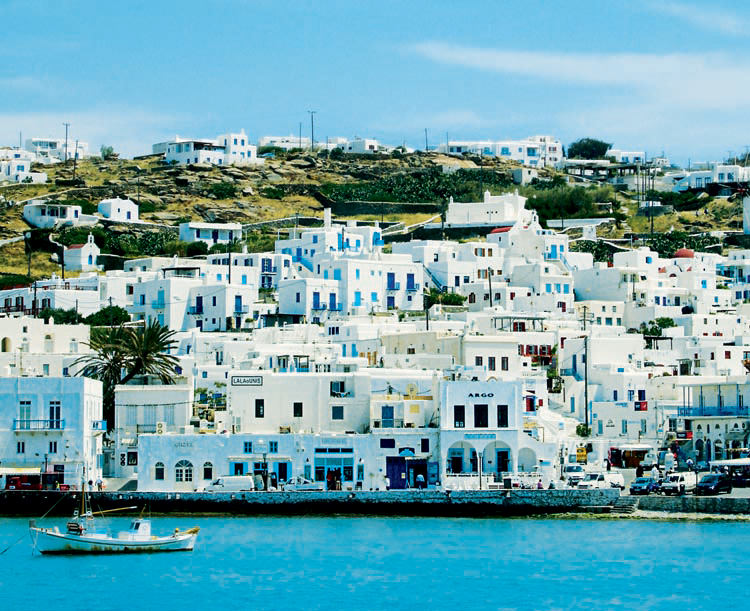
Easyjet flies to Athens from £200 return (easyjet.com). The ferry from Athens (Rafina) to Andros takes two hours and costs £26 return (fastferries.com). Micra Anglia Hotel has boutique doubles from £96 per night (micraanglia.gr), and the Andros Holiday Hotel has rooms with verandas overlooking the sea, from £65 (androsholidayhotel.com).
'Sicily is the place where east meets west and north meets south. Just like in Athens or Casablanca, you can’t be certain where you’ve landed – is this Europe or Africa, Italy or the Orient? And nowhere more so than in Palermo. The narrow alleys are criss-crossed with laundry lines, the buildings unchanged and unpainted for centuries. Street corners hide the most exotic of North African markets, piled with artichokes, blood-red oranges and aubergines. It’s a mixture of panache and opulence hidden by a dusty cover of poverty and decay.
I like to eat at Antica Focacceria San Francesco (afsf.it) in Palermo, a picturesque place on Via Paternostro that’s popular with locals. It’s been open since 1834 and does amazing pizzas and traditional milza, which is a great lunchtime snack – a roll with ricotta, parmesan and sautéed veal spleen. It’s sounds strange but it’s very good.
Cakes are delicious in Sicily and the Antico Caffè Spinnato on Via Principe di Belmonte is piled high with cannoli, the tubular pastry filled with ricotta, chocolate and candied oranges. Dinner can be maccu, a bean soup with wild fennel, or street-food like aubergine salad and arancini, delicious little stuffed rice balls.
Casa del Brodo (casadelbrodo.it) is a Palermitan institution, with two lovely old-fashioned rooms decorated with pictures of its famous patrons. The tortellini in broth are delicious, as is the swordfish involtini and pasta con le sarde. I like to go to Kursaal Kalhesa (kursaalkalhesa.it), which is set in an atmospheric 15th century renovated castle. The dining room is made from vaulted stone and there’s an excellent Italo-Arabic menu, where indulgent Tunisian brik is followed by gnocchi or Sicilian cassata.
In the little shops in the city centre you can often sample great wines from small producers, accompanied with platters of salami, pâtés and even dark chocolate. Oh, and make sure you have an ice cream the Sicilian way – served on a little bap.’ Vanessa Smith

Flights with Alitalia to Palermo cost from £150 return including taxes (alitalia.com). Falkensteiner Hotel Palazzo Sitano is a fully renovated 18th-century palazzo, with rooms from £95 per night (falkensteiner.com). Residenza d’Aragona has apartments for two people from £69 per night in the centre of Palermo (residenzadaragona.it). Hotel Bel Tre is on the peaceful hills above Palermo, and has comfy doubles from £48 per night (bel3.com).
‘Whatever the reason – and it’s just as likely to be their tongue-twisting name as their comparative remoteness – the Aeolians have never really registered on British holidaymakers’ collective psyche. But you won’t catch me complaining. The absence of any hint of the familiar is just one of the many enticing elements of this Y-shaped cluster of seven vividly distinct volcanic islands off north-eastern Sicily.
Naming a favourite among the seven is a completely fruitless exercise; it’s inconceivable that one would visit and not indulge in a little light island-hopping, so rewarding are these short forays through the sparklingly clear Tyrrhenian waters. From the lush, verdant hillsides of Salina and the pungent mud baths and hot springs of Vulcano, to the understated affluence of Panarea and eerie isolation of Alicudi, the diversity is enthralling.
We base ourselves, as many do, on Lipari, the geographical and commercial hub of the archipelago. South African Diana Brown gets zero points for imagination with the naming of her bed and breakfast; thankfully, all her creative energies have been channelled into establishing Diana Brown as a wonderful little retreat with homely rooms boasting original tiled floors and a sun-kissed roof terrace.
You’ll find the Aeolians as ‘playful and spontaneous’ as those described by Homer in The Odyssey and the food and wine as irresistible as that which greeted Odysseus and his crew. Park yourself at any trattoria and you’re in for a treat, such is the ubiquity of freshly caught seafood. Spaghetti al nero di seppia proved an unexpected favourite, its plump, succulent strands dyed a midnight blue by the cuttlefish ink after which it is named.
La passeggiata is a way of life in Lipari, and we’d always finish this ritual evening amble with a glass of home-grown vintage. Most famous of these is Malvasia delle Lipari, an amber-coloured dessert wine tasting of honey and apricot, dating from classical antiquity.
A truly spectacular experience awaits on the Aeolians’ most easterly outpost, Stromboli. This is a volcanic island straight from a child’s imagination. The trek to its perfectly triangular crater takes several hours, with increasingly thunderous roars as you get nearer and nearer to its smoking peak.
On my last visit, we arrived at the 3,000ft summit as the sun fizzed into the distant watery horizon, its fiery colours perfectly mirrored in the growling, magma-spitting void. We peered in. It was a truly awe-inspiring experience.’ Duncan Craig
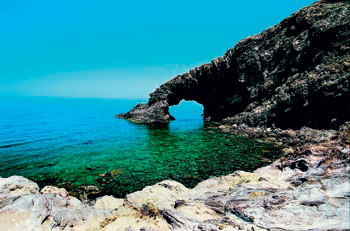
Flights to Catania (Sicily) cost from £212 return including taxes (easyjet.com). The ferry from Sicily to Lipari takes one hour and costs £15 (directferries.co.uk/usticalines). Luxury Villa Enrica has picturesque views across the bay of Marina Lunga, with doubles from £78 per night http://villaenrica.it, and double rooms at Diana Brown’s pretty, atmospheric hotel cost from £52 (dianabrown.it)
'Gozo is only five kilometres from Malta but 50 years back in time – in a good way. Sleepy towns; winding dusty country lanes between green fields; soaring cliffs and azure seas.
Mediterranean islands as they used to be, but too rarely are these days. I stayed in a honey-hued stone farmhouse just outside Gharb, the westernmost point of Gozo, in a gloriously cool, cave-like room. The best thing was that I had a bicycle – everywhere in Gozo is near the sea, so you don’t really need a car to get around. As long as you’re near a town, everything is really accessible.
Gozo is famous for its sheep’s cheese – gbejniet – and honey as well as bread; all ideal for picnics. Traditional dishes draw on a history of Phoenician, Roman, Arabic and Italian foods, as well as the courtly dishes of the Knights of Malta and 150 years of British influence. The knights allegedly made rabbit the national dish, as a small-scaled game animal to be hunted in a small-scale world.
Best of all is the seafood. Sea urchins with tagliatelle are light and tangy. In September, the island goes mad for lampuki, a kind of dorado, caught by laying mats on the sea surface to provide shade for the fish to shelter under. It’s served in pies or fried in chunks with potatoes and local breads such as hobz biz-zejt – bread with oil plus tomatoes, capers and locally evaporated sea salt.
The Maltese islands have their own signature soft drink: Kinnie – a tart mix of bitter oranges and herbs. Wine was introduced by the Phoenicians, improved by the Romans and permitted by the Arabs. It was important to the Knights of Malta and their courtly lifestyle and, uncharacteristically, it was almost eradicated by… the British!
However, for a proper drink, I like the Gleneagles Bar in Mgarr – it’s decorated with fishing nets and dusty stuffed fish and is always packed with eccentric locals. It’s been in the same family for close on 300 years and has a really great atmosphere.’ Jasper Winn
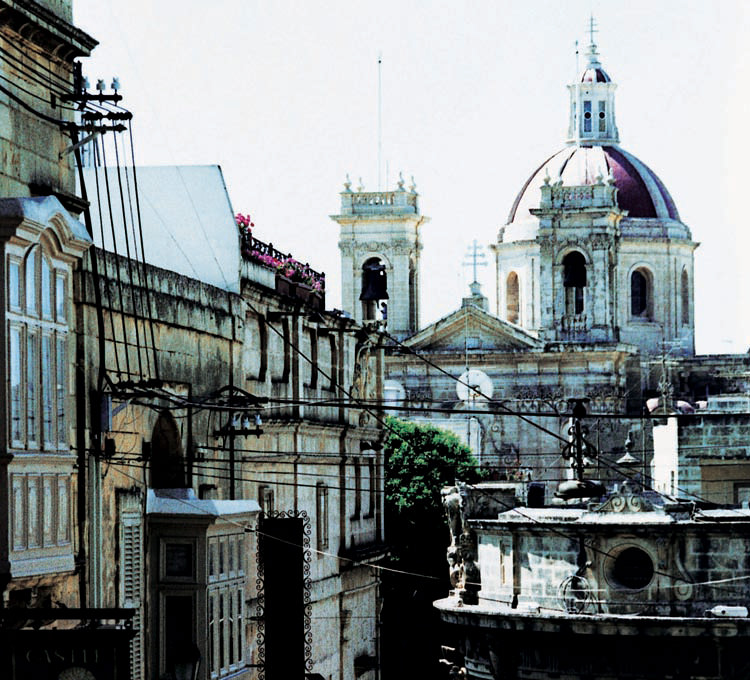
Flights to Malta with Easyjet cost from £150 return, including taxes (easyjet.com). The ferry from Malta (Cirkewwa) to Gozo (Mgarr) is £4 return. Kempinski Hotel San Lawrenz has comfortable doubles from £140 per night including breakfast (kempinski.com). The Grand Hotel Excelsior overlooks Mgarr harbour with panoramic views of Malta. Doubles from £70 per night (excelsior.com).
‘Ham, cheese, oil, wine. Food is stripped down to the simple things on the Croatian islands of Krk, Cres and Lošinj in Kvarner Bay. Everyone has a little plot of land and grows their own potatoes, chard, artichokes and tomatoes. Islanders always welcome you with home-made brandies distilled from cherries, figs, herbs and green walnuts; plates of cheese and air-dried ham, and bowls of dried figs. It’s very hard to meet anyone without them saying “have a drink” or “try this” and “come into our house”. Time sort of slows down, which is what you want somewhere like that. It’s almost like winding the clock back and going back in time a bit, just incredibly warm and refreshing.
There’s stunning coastline around all the islands, with lots of little coves and inlets and even mountains when you go inland. It’s a real kaleidoscope of views – rock and sea and this wonderfully clear air that’s sweetly scented and so pure. It’s a bit like the east coast of Italy must have been before the Italians came and spoilt it!
On Krk, every meal starts with ham, cheese and a basket of freshly baked bread. Everybody cures their own meat and ham, and it tastes fantastic, although it’s a bit chewy. There’s a sense of being disconnected from the mainland, both naturally and through being self-sufficient. They do a lot of home-made liqueurs and if they don’t make the cheese themselves, there’s a lady down the road who makes it. Most families still cure and mature pršut – which is doublesmoked ham – themselves, and even if they don’t have their own pig, they will buy a haunch to salt for several months, lightly smoke it over wood fire and hang it to dry in the winter Bura wind.
You get to Cres via a short ferry ride, and there are more sheep than people. The sea salt in the air and the wild mountain herbs give the Pramenka, the mountain breed of sheep, a special flavour. There’s a tiny inland village called Loznati where the Bukaleta family restaurant (bukaleta.hr) specialises in lamb. It’s baked in the wood fire, made into the most delicious, aromatic stews, breaded and fried, grilled as cutlets or made into a clear soup.
On the island of Lošinj at the Restaurant Punta in the village Veli Lošinj, octopus, and sometimes lamb, is cooked under peca. It’s packed into an iron pot with vegetables and white wine, then covered with a heavy, domed lid. After several hours it’s black, with milk-white, tender flesh that simply delicious.
I always end the evening with a glass of intoxicating, home-made cherry brandy and a chat with the locals. I can’t even pronounce Krk without every Croatian in sight collapsing in fits of laughter!’ Clarissa Hyman

Croatia Airlines (croatiaairlines.com) flies once a week from Heathrow to Rijeka on Kvarner Bay, and ferries operate regularly between islands (visitcroatia.co.uk). Hotel Marina is a sleek place on Krk’s waterfront, doubles from £70 per person with breakfast (marinahotelbenidorm.com). Apartments can be hired on Cres from £80 per person, per day (islandcres.com).
‘I love Ibiza, adore the Croatian islands of Korcˇ ula and Hvar, and have had blissful trips to Sicily and Kefalonia. But Corsica is something else. Imagine a chunk of the Alps, complete with snow-capped peaks, ancient villages clinging to hillsides, clanking cowbells and soaring majestic eagles, transported southward and dropped miraculously into the Mediterranean.
Yes, there are beautiful white sand beaches – including Palombaggia, one of the most photographed stretches of shore in the Med – and gin-clear water for snorkelling, but drive 20 minutes inland and you find yourself amid breathtaking mountain scenery.
One day you can have lunch by the coast, eating freshly caught grilled fish and drinking chilled rosé as the waves break gently beside your table. The next you can be in a mountain village, eating sausage stews and home-made charcuterie, salads of baked brocciu – a strong, local ewe’s cheese – and drinking Pietra, the island’s unusual chestnut-flavoured beer.
Corsica is a wild place, the antithesis of the pampering but mind-numbing five-star resorts you find in so many corners of the Med. Much of the land is covered by maquis, a dense jungle of low-lying shrubs and herbs so fragrant that Napoleon Bonaparte (the island’s most famous son) said that when approaching by sea he could recognise his homeland with his eyes shut. Wild boar roam around the hills, as do free ranging pigs, goats and cows. So too do tortoises, which can give you a start when they strike out, surprisingly fast, across a patio.
It’s not just the animals that are wild. The first thing you notice when you arrive in any town are bullet holes, sprayed across the “Bienvenue à…” sign. These are the work of pro-independence campaigners, protesting at the signs being written in French, not Corsican. The island has been part of France since 1769, but they know how to bear a grudge in these parts. Corsica is the home of the vendetta, the strict code that required families to avenge slights on their honour. Legend has it that murderous feuds continued for centuries until the original slight was long since forgotten.
There are some fine hotels, but the thing to do is hire a villa, ideally on a hillside among the maquis, with a view down to the coast. One such is the Bergerie Olivella close to Olmeto in the west of the island, where I spent a blissful week, interspersing snorkelling and hill walking with wine-tasting sessions at the numerous vineyards scattered nearby and long, lazy mornings reading books in the hammock strung from an olive tree in the garden.
Another favourite of mine is the Maisons Ceccaldi, a collection of small houses in the village of Lama in the north. Medieval Lama is enchanting in itself, but also provides a great starting point for walking around Monte Cinto, Corsica’s highest peak. Hardcore hikers will be in their element, but you can also do as we did, strolling for a few hours through the forests, picnicking in a high meadow, then spending the afternoon bathing in rocky pools in the sparkling mountain streams. Bliss.’ Tom Robbins
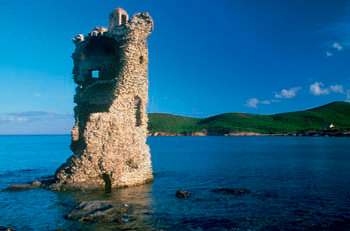
Air France flies to Ajaccio from £141 return including taxes (easyjet.com). La Signoria is set between mountains and sea, with doubles from £270 (hotellasignoria.com). Hôtel Demeure is a 19th-century mansion surrounded by an exotic Mediterranean garden with doubles from £95 per night (castelbrando.com). Bergerie Olivella is another gorgeous self-catering property sleeping up to six, from £486 per person (including flights), corsica.co.uk.
Subscribe and view full print editions online... Subscribe